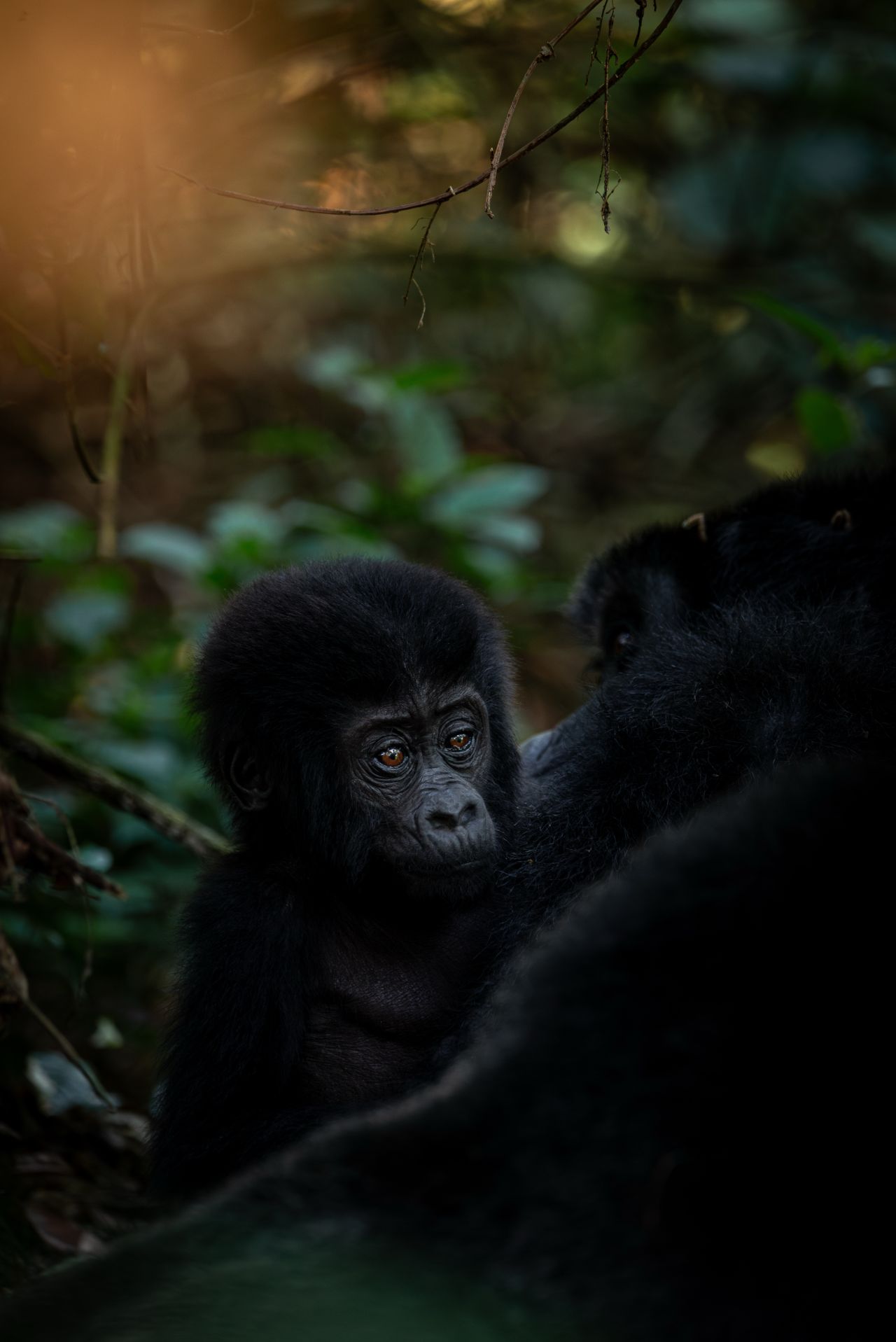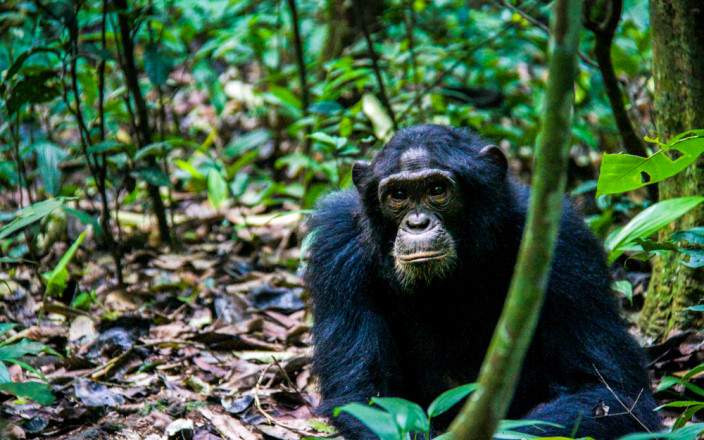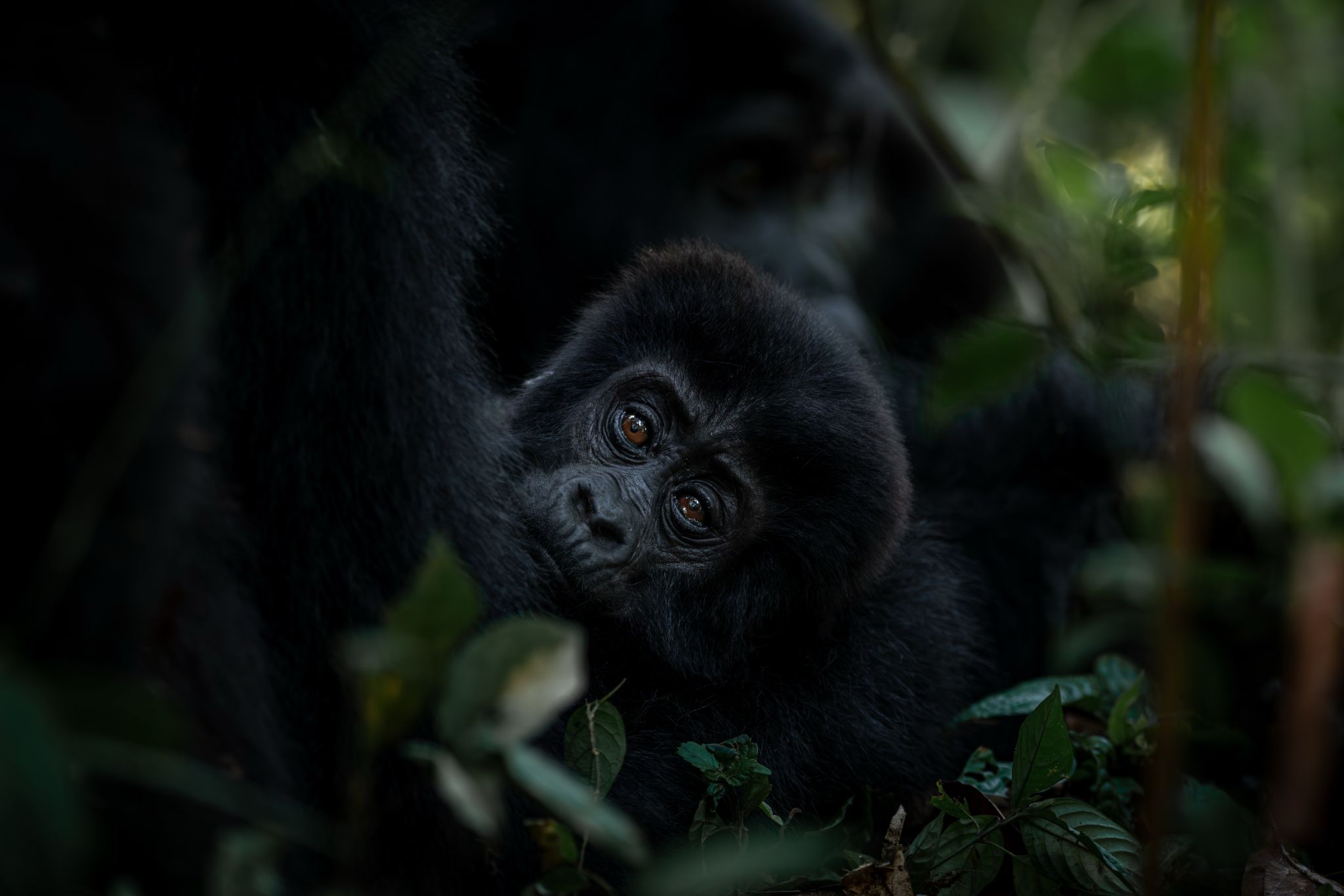Gorilla vs. Chimpanzee Trekking: Key Differences: Tracking Africa’s great apes is a bucket-list adventure—but should you choose mountain gorillas or chimpanzees for your next forest primate encounter? In this comprehensive guide, we break down everything—from permit fees and terrain to wildlife behavior and conservation impact—so you can make an informed choice and book the perfect eco-friendly safari.

Quick-View Comparison Matrix
| Feature | Gorilla Trekking | Chimpanzee Trekking |
|---|---|---|
| Permit Fee | $800 – $1,500 (Uganda/Rwanda) | $200 – $350 (Uganda) |
| Average Trek Duration | 2 – 6 hours | 1 – 4 hours |
| Terrain | Steep, uneven rainforest slopes | Rolling hills & river-valley trails |
| Group Size | Up to 8 visitors per gorilla family | Up to 12 visitors per chimp community |
| Photo Opportunities | 60 min at 7 m distance; no flash | Up to 2 hrs; closer, dynamic shots |
| Physical Demand | High (altitude + dense undergrowth) | Moderate (easier gradients) |
| Conservation Impact | Critical funding for mountain gorillas | Key support for chimp habituation research |
| Booking Lead Time | 3–6 months in advance | 1–3 months in advance |
1. Which Trek Is More Physically Demanding?
- Gorilla Trekking
Ascents often exceed 1,500 m through dense, mossy undergrowth. Expect slippery roots, steep inclines, and stretches without clear trails. A solid aerobic base and good balance are essential. - Chimpanzee Trekking
Trails in Kibale, Budongo, and Mahale are generally more level, with occasional stream crossings and light underbrush. Hikers with moderate fitness can manage comfortably, though occasional climbs may require short breaks.
Pro Tip: Train with hillside hikes carrying a daypack (~5 kg) and include stability exercises (lunges, single-leg balance) to prepare for uneven terrain.
2. How Do Permit Fees & Booking Compare?
| Destination | Gorilla Permit | Chimp Permit |
|---|---|---|
| Uganda (Bwindi/Mgahinga) | $800 pp | $250 pp (Kibale) |
| Rwanda (Volcanoes NP) | $1,500 pp | $150 pp (Nyungwe NP) |
| DR Congo (Virunga) | $450 pp | N/A |
- Gorilla permits sell out rapidly; book 3–6 months ahead via the Uganda Wildlife Authority or Rwanda Development Board.
- Chimp permits are more plentiful; secure slots 1–3 months before travel through UWA’s portal or your safari operator.
Ready to book?
3. Wildlife Behavior & Photo-Op Potential
- Mountain Gorillas
Habituated families permit 60 minutes of silent observation at a 7 m distance. Interaction is solemn and respectful—ideal for close-up shots with a zoom lens. Flash photography is prohibited to safeguard gorilla health. - Chimpanzees
Interaction times vary by group; some allow up to 2 hours of dynamic observations. Watch juveniles swing overhead and capture wide-angle canopy shots. A camera with both zoom and wide-angle lenses is recommended.
4. Conservation & Community Impact
Every permit fee contributes directly to:
- Gorilla Trekking:
- Anti-poaching patrols and forest restoration in Bwindi and Mgahinga
- Community schools, healthcare, and employment for local guides and porters
- Chimp Trekking:
- Behavioral research and habituation programs in Kibale and Budongo
- Support for village craft cooperatives and ecotourism training

Your choice not only enriches your safari—it uplifts entire communities and secures the future of these endangered primates.
5. Insider’s Experience
“One misty morning, I led guests to the Mubare gorilla family in Bwindi. As we crested a ridge, a silverback emerged, chest heaving, then paused to gaze at us through the ferns. Two weeks later, in Kibale, a baby chimp tugged at my guide’s sleeve, peering curiously at our group. The solemn dignity of the gorillas and the playful energy of the chimps—both moments crystallize why primate trekking is so transformative.”
6. Micro-Case Study: Mubare vs. Sebitoli
| Attribute | Mubare Gorilla Family (Bwindi) | Sebitoli Chimp Community (Kibale) |
|---|---|---|
| Group Size | 12 individuals | ~30 individuals |
| Trek Difficulty | ★★★★☆ | ★★☆☆☆ |
| Best Months | June–September | December–February |
| Observation Window | 60 min at 7 meters | Up to 2 hrs, variable distance |
This side-by-side highlights the solemn intimacy of a smaller gorilla family versus the lively, close-up dynamism of a larger chimp community.
7. Gorilla vs. Chimpanzee Trekking: Key Differences
- Which trek is more physically demanding?
Gorilla trekking involves steep, slippery rainforest slopes above 1,500 m with dense undergrowth and uneven trails—requiring strong legs, balance, and good cardiovascular fitness. Chimp treks follow gentler gradients and clearer paths, with only occasional hill climbs, making them accessible to hikers of moderate fitness.
2. How do gorilla and chimpanzee permit fees compare?
Gorilla permits run US $800 (pp) in Uganda, US $1,500 (pp) in Rwanda, and US $450 (pp) in DR Congo (high season), selling out 3–6 months ahead. Chimp permits cost US $150–$350 (pp) across Uganda and Tanzania and remain available until 1–3 months before travel.
3. Can I get close to gorillas for photos?
You’ll observe gorillas for 60 minutes at a mandatory 7 m distance—ideal for telephoto (200 mm+) shots but no flash or wide-angle framing. In contrast, chimps often allow 3–5 m approaches for up to 2 hours, offering more dynamic, close-up photography opportunities.
4. What conservation benefits does my permit support?
Each permit funds anti-poaching patrols, habitat restoration, and trail maintenance; underwrites community schools, clinics, and clean-water projects; and sustains long-term research and habituation programs—ensuring both primate survival and local livelihoods.
8. Related Links
- Best Time for Gorilla Trekking in Uganda
- Eco-Friendly Safari Tips & Packing List
- Chimpanzee Trekking Permits Explained
- Rwanda Development Board (RDB)
- Uganda Wildlife Authority (UWA)
Frequently Asked Questions
Can I trek gorillas and chimpanzees on the same trip?
Yes—combine chimps in Kibale with gorillas in Bwindi for the ultimate primate safari.
What age restrictions apply?
Gorilla treks require participants to be 15+ years, while chimp treks generally allow 12+ years (subject to guide discretion).
What should I pack?
Sturdy hiking boots, long-sleeve shirt, long pants, waterproof jacket, gloves, gaiters, insect repellent, headlamp, zoom and wide-angle camera lenses.
How can I prepare physically?
Incorporate hill walks with weighted packs, core strength exercises, and flexibility routines to tackle steep rainforest terrain.
Whether you seek the solemn grandeur of mountain gorillas or the playful energy of chimpanzees, Agasaro Safaris crafts the perfect, eco-friendly itinerary for your next adventure.
Book your primate trekking adventure today:
Embrace an unforgettable forest primate encounter—backed by genuine expertise, robust conservation impact, and seamless booking.
